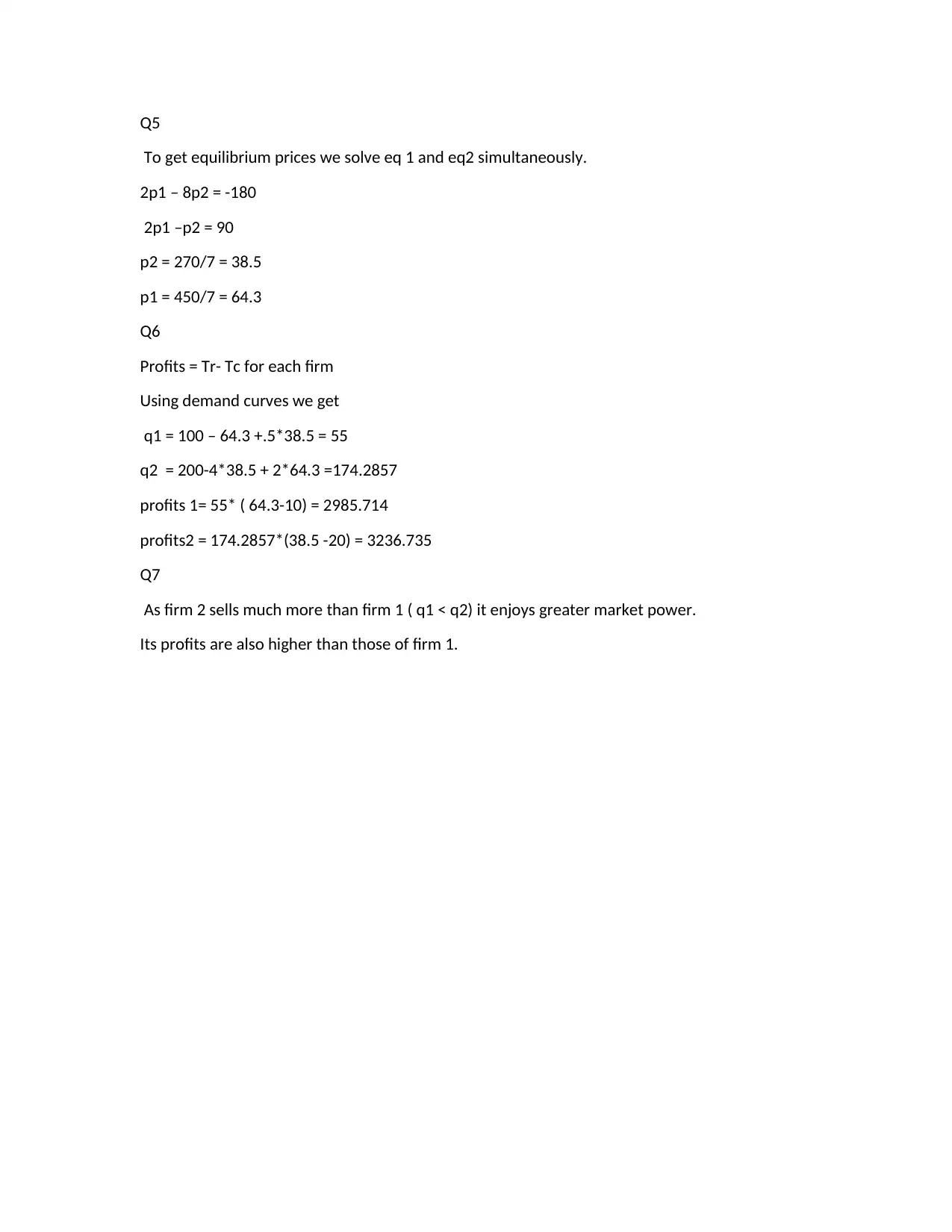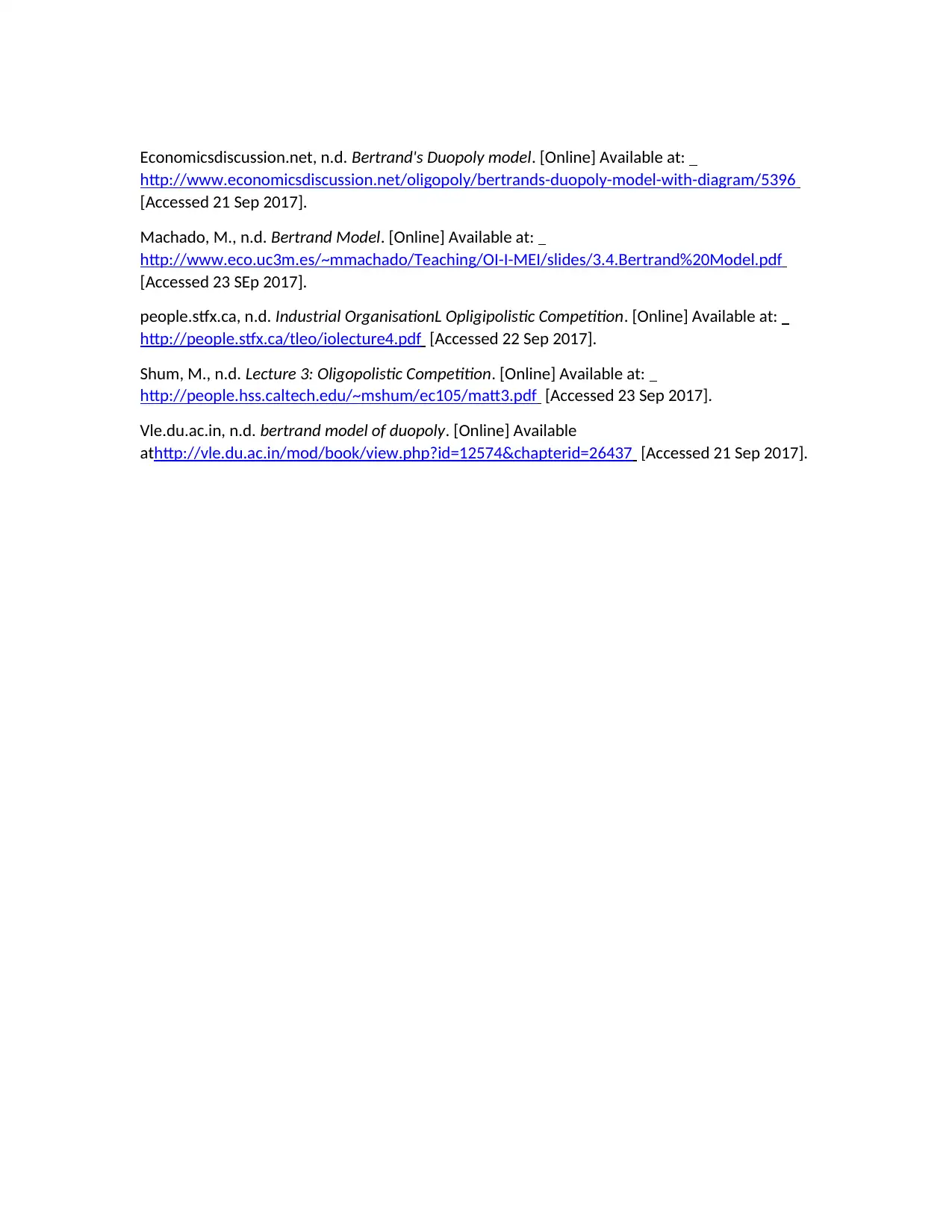Analysis of Bertrand Duopoly Model with Mathematical Equations
VerifiedAdded on 2020/04/01
|3
|504
|32
Homework Assignment
AI Summary
The assignment explores Bertrand's Duopoly model by deriving demand functions, establishing best response equations, and calculating equilibrium prices and profits for two firms. It begins with defining demand curves for each firm based on given parameters. The next step involves determining the Marginal Revenue (MR) from Total Revenue (TR), followed by setting MR equal to Marginal Cost (MC) to obtain best response functions for both firms. Solving these equations simultaneously yields equilibrium prices, which are then used to determine quantities and profits. Ultimately, it compares market power and profitability between the two firms based on their output levels and profit margins.
1 out of 3






![[object Object]](/_next/static/media/star-bottom.7253800d.svg)